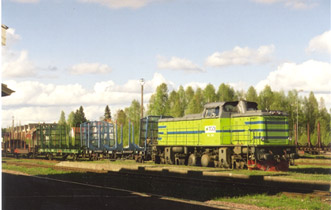
A TGOJ T43 resting for the weekend in Orsa, August 2001. See more in Ollies trainstuff!, all colorphotos by Ollie Ahokas
Inlandsbanan.
Orsa

To stations along Mora - Sveg. .
Orsa is located only 17 km.s north of Mora is an operationhub for the M.O.W. crews southern part of the line and is the terminalpoint for the line to Bollnäs. There is not much operation today and the yard is rationalized. This means that much of the tracks has been removed and the remaining tracks looks like an unlogical version of a stageing yard.
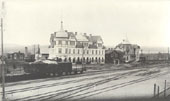
Orsa at turn of the century. When the railroad arived the Railroad Street got new more modern buildings.
History.
Orsa orginally was a small village built around the fairly large church after a fire that destroyed most of the orginal farmbuildings an the arrivial of railroad changed the looks of the village forever. As the location was also a junction, the community became much of a railroadtown. Along the station street, which became the mainstreet of the community more citylike buildings were raised. Along the mediumsized depot building a roundhouse and even a hotel just morth of the tracks were also constructed.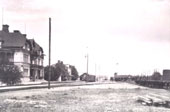
The Railroad Hotel in the foreground and the depot and view north in 1915.
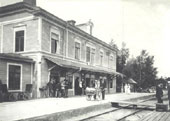
Traintime in 1920.
By studing early photoes, the center of the community was concentrated along the mainstreet during this time. Much of the commedities needed for the booming town came by rail. The yard was busy, with interchanging of cars from the line from Bollnäs line with the Inland-line. Orsa was also a terminal for Bollnäs lines passanger traffic in the later years of passenger service. The traffic dwindled eventually and the importance of the yard came nearly to extint. But during the nineties the protests of closing the Inland-line paid of and the limited freight service on the Bollnäs line was reinstalled by a local operatorcalled Woxna Express, the tiny operator was considered by the mighty national system as athreat, and the company was soon out of business and after abandoning its operation a long lived court battle that continued in years. A new operator, Orsatåget herited the former dieseltractor and a few timbercars and were in to businesss untill it mergered to Inlandgods.
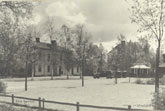
The streetside of the depot and the Railroad Hotel in 1902.
In later years, the Orsatåg purchased or leased a couple more tractors only to be replaced by a former T21-class 800 hp MAK-designs, After the crankshaft caused trouble a leased much larger T43.class unit was placed in service, and is stilloprated by Inlandgods. Besides hauling timber, a short period of time during early summer also limestone shipments from Kallholn located just a few kilometers east of Orsa are handled. The yard in Orsa was used for loading timber in to the 2001. And during the spring the roundhouse sees a lot of activity, during the summertime track maintenece. Today, the depot is idle unused, after the operator was fired. After a year as a secondhad or a flee market the depot, together with the roundhouse offered for sale.
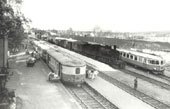
This busy scene taken from the Hotel shows the transition from Steam to Diesel. The Y6-8 class railcars were used to the 80-es.
A collection of photos from Orsa as it is in 2003.
Modelling notes
Orsa as seen today is much like a stubbended staging tracks seen in some of the latest US layouts. So Orsa could be an ideal solution for those of you who are bothered to see a large portion of a layout looking unsceniced. The handsome, yet basic design of the station bulding and the hotel gives the location a breeze of the boomtown years and the yard itself would make an intersting layout itself, specially during the postwar years to the early dieselation days. During this time much of the less than a carload shipments was delived by rail and around the yard there were a number of warehouses that received goods by rail. The freight house is today raised, and its platform is used as a part of a foundation for a parking lot.
Change of guards.
The images are clickable for larger view
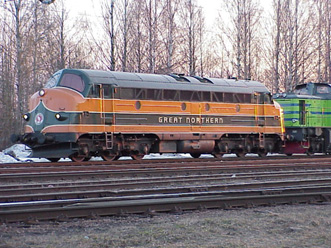
A The Great Northern lives in Sweden! The TMY 106 and a T 43 is coupled to the train of empties to Sweg, the train today is extended by a string of empty timbercars. This operation is usual during the spring and summer as the tonnage of containers declines.
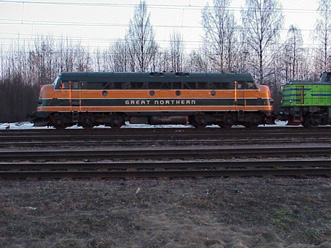
A side view of the Great Northern unit.
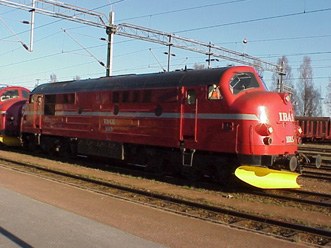
In summer of 2001 a long loaded train of container has arrived in mora with IBAB.s TMX 1015 and themainstay unit on the southern leg the 1013. IBAB and Tågab keeps the engines well mainteined and are kept very clean.

A change of guards in Mora in April 2002, The southbound loaded container train has arrived in Mora, hauled today by two of the Tågabs TMY.s. The power is switched as today the empty counterpart is hauled by a single orange and blue T43. and the silver painted cabunit is needed to assist the train to the ports in the east coast. Usually this final leg is hauled by a single 6-axle elctric Ma unit. The green T43,which had earlier arrived with a load of timber and the Great Northern TMY are coupled for the trip to north.
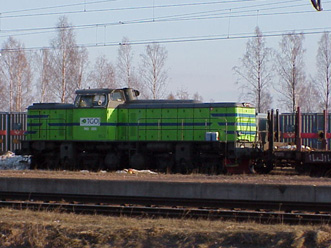
The TGOJ T43 waiting for the return to Sweg, August 2001. See more in Ollies trainstuff!, all colorphotos by Ollie Ahokas

This leased container car from CS is loaded typically to cars of less capacity, and are loaded only with a pair of containers placed above the trucks.
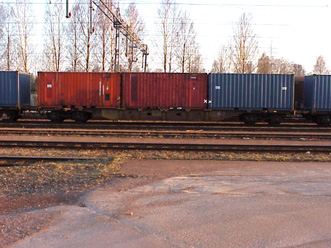
The most common car for the container trains are large these high capacity leased cars from AAE.

The logcars shows also a great varity, but most cars are of this custom designed cars. but also typical stake cars of Kbs are used and later Inlandsgods own 4-axle cars rebuilt with bulkheads.